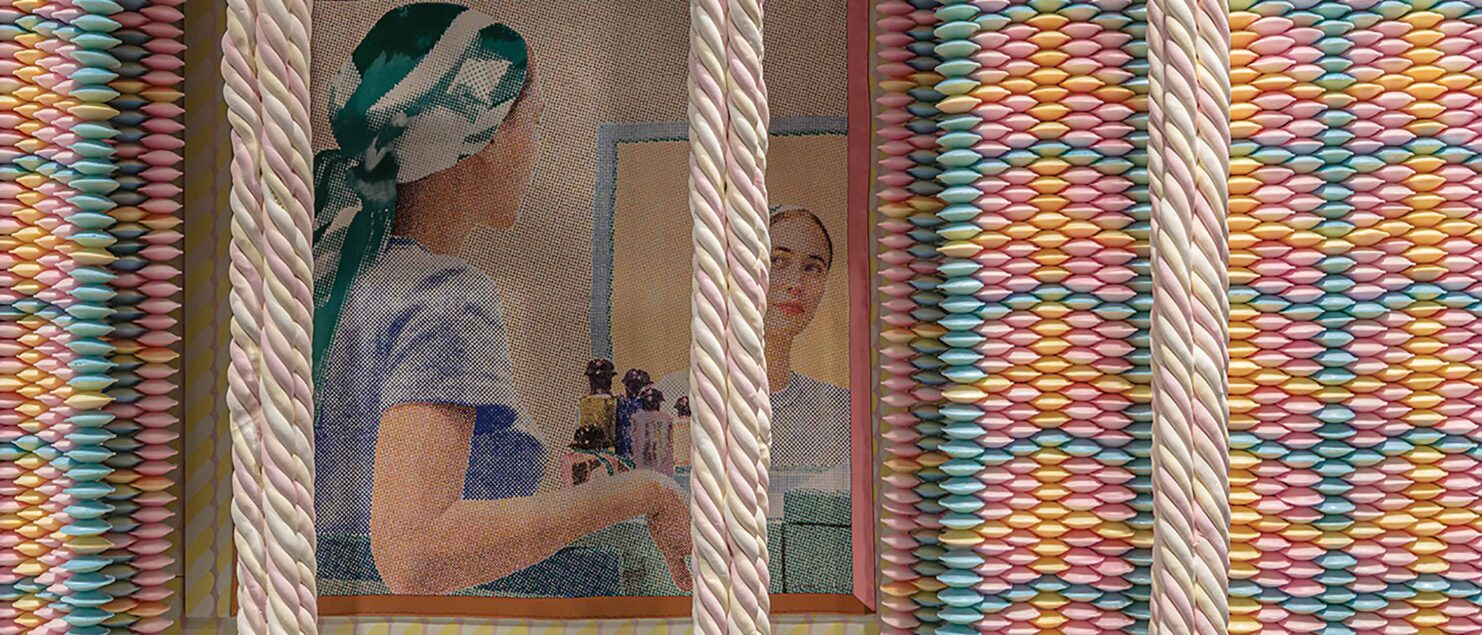Interview with Simone Post: intuitive and transformative design
Where others see waste, Dutch designer Simone Post finds the raw material for her art. From discarded textiles, old sneakers and unexpected materials, Simone Post creates design objects, where what at first glance is no longer useful, acquires a new life.
In a chat with Yarn, the Rotterdam-based artist, who has collaborated with brands such as Hermès, Vlisco and Adidas, talks about her creative process, the challenge of the material she chooses and the need for companies to be aware of the impact of their productions on the environment.
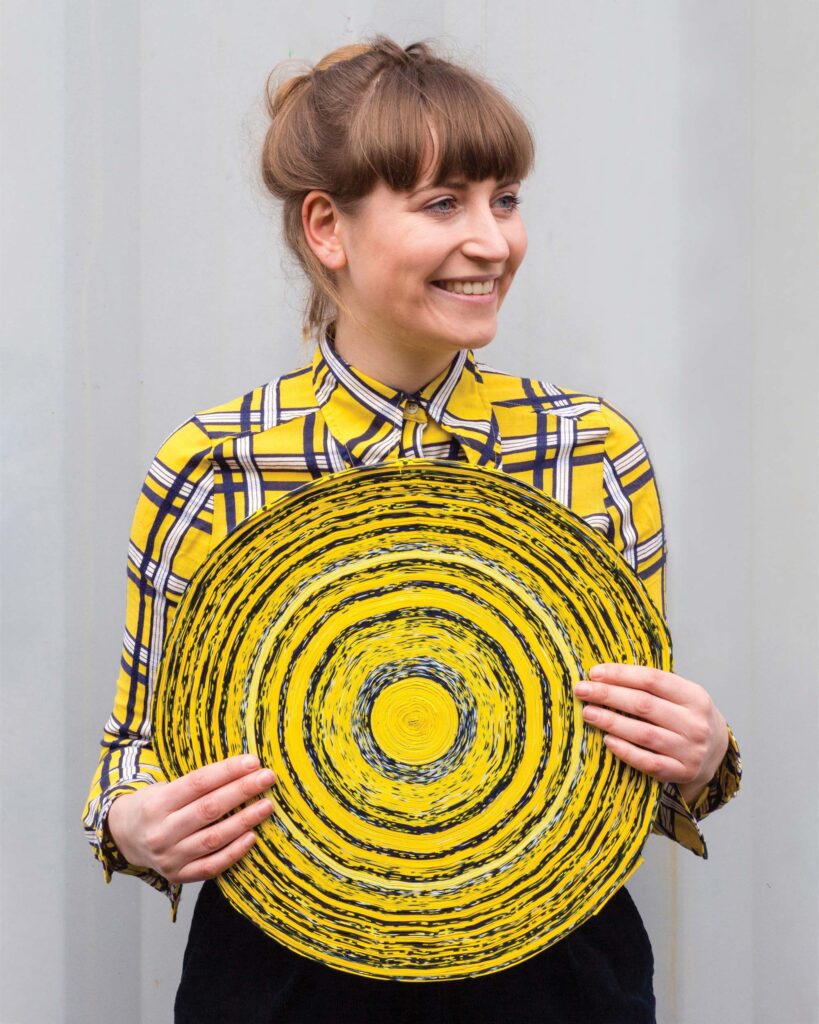
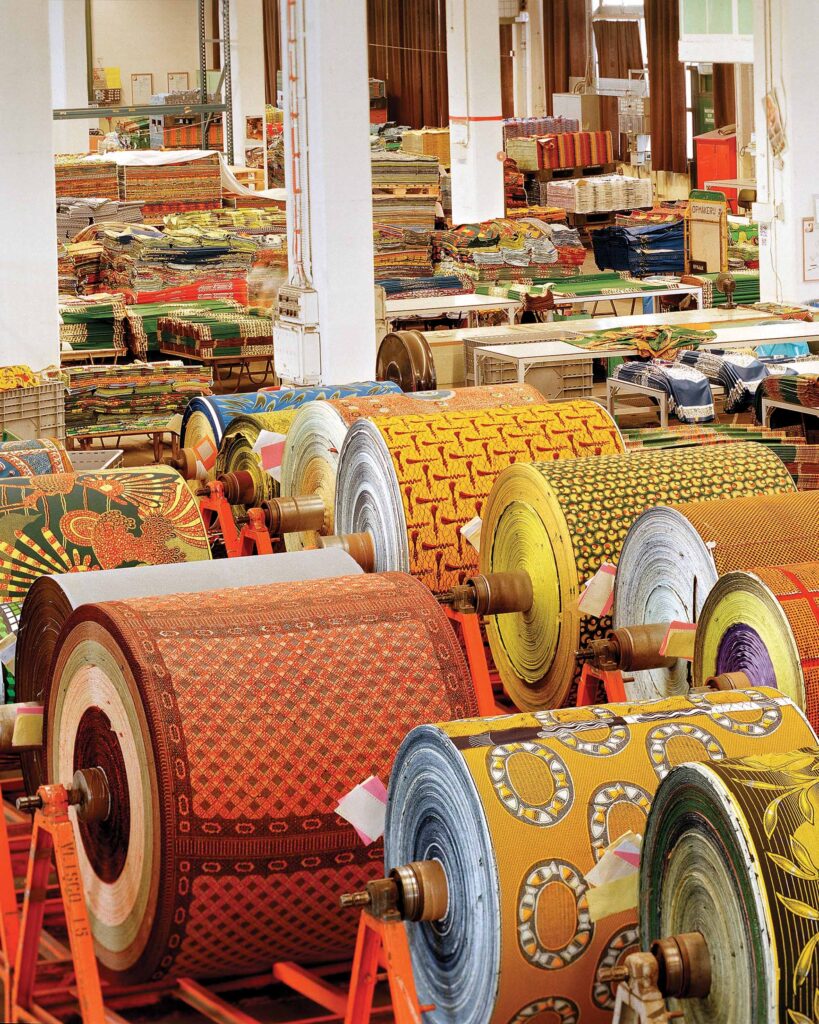
How would you differentiate upcycling from recycling?
The main difference is the fact of adding or subtracting value to the material. The word “recycle” doesn’t mean much to me since almost everything can be recycled. Upcycling means transforming something and giving it more value than it had before. Many times, people think that a product is good because it is recyclable and that doesn’t really say much.
Your website states that the final product is not necessarily the most important aspect of the design process. What is it about the process that appeals to you?
I really enjoy making and working with the materials. The process is the most fun part because you can explore so many possibilities and all kinds of surprises pop up. I’m not a designer who knows exactly the steps beforehand: “I want to make a table, so I’m going to draw it and then I’m going to make it.” My process has the material as a starting point, and when I start working, naturally, the new product or function emerges. When something is finished, I lose interest and move on to something else.
Creating from discards would seem to be a great challenge in aesthetic terms. How does the transformation begin?
Of course it is a challenge and many difficulties arise. There are times when I would like to put everything together and find an easy solution. But the important thing is always to ask yourself what is the most challenging choice. And, at the same time, it’s the most fun because when there is material, it can always be transformed into whatever you want. My starting point is a cart full of waste that I have to sort and investigate, see what I have, what are the different shapes, play with it. Like when you are a child, you have a box of blocks and you are happy to be able to do whatever you want. Everything can be transformed into something beautiful as long as you invest energy and time. I think there is no material that cannot be transformed.
Another challenge in the use of scrap materials is the diversity of their components. There is usually a lot of mixing, with different shapes, thicknesses, colors. And consumers are used to everything being identical, perfect and flawless. And when working with this kind of things, the final product is unique, it has small differences and precisely because of that, it also has value.
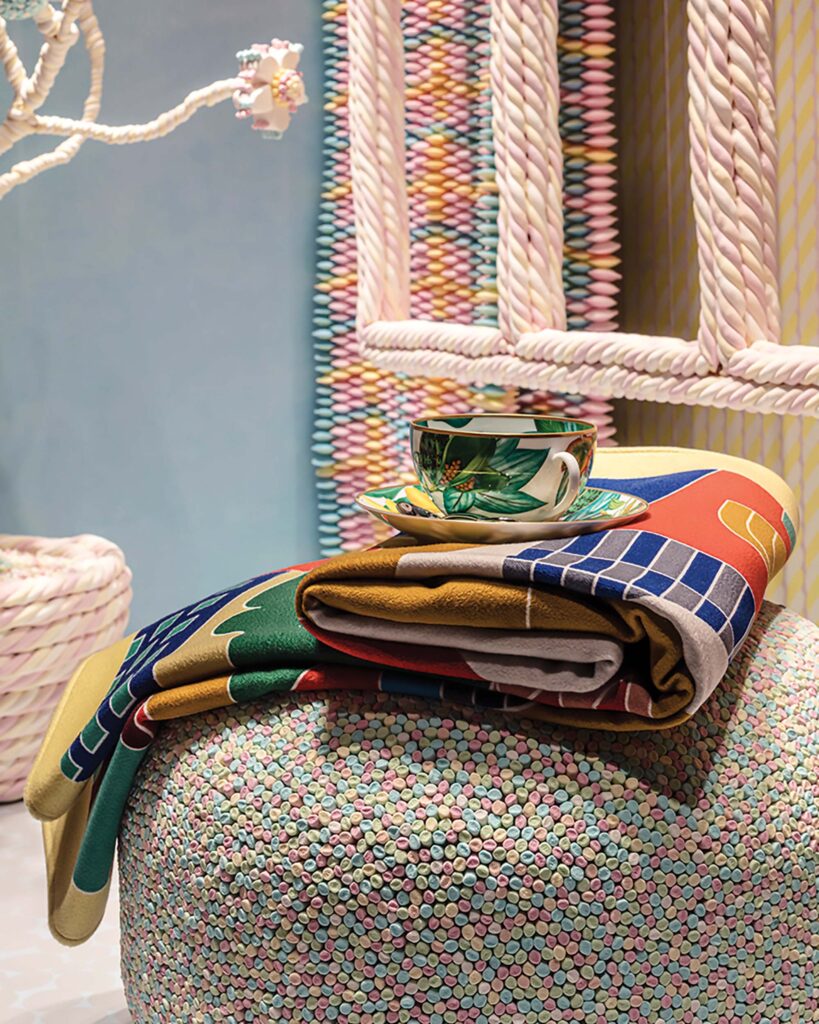
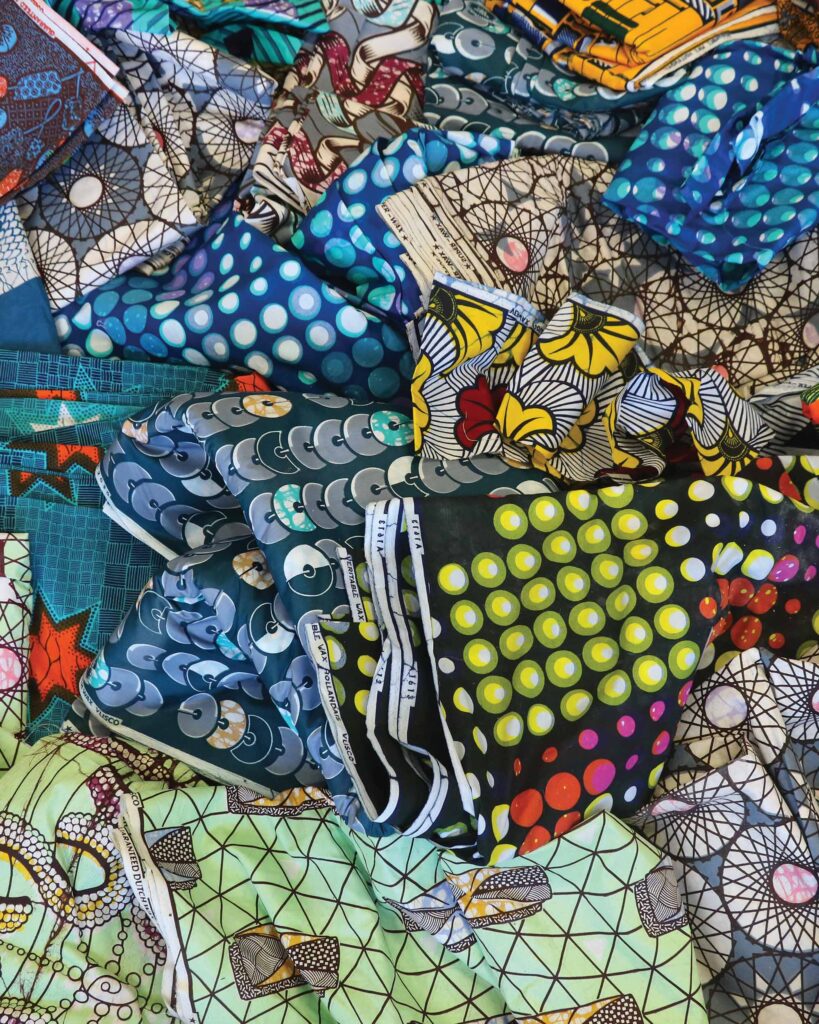
Simone Post explores with materials and the results surprise the viewer. Perhaps that is why, in recent years, she has been called upon by major brands to participate in various projects. In 2022, Simone designed for Hermès the windows of its store in Japan, creating a fantasy world built entirely with marshmellows intertwined as yarn. In 2021, she intervened the office building of Vlisco, the Dutch brand that had already invited her on other occasions to design textiles. The mural she created covers the facade of the 2500 m2 concrete building and is a celebration of color and movement that dialogues with the brand’s typical designs.
In 2019, in a collaboration for the Adidas store in Paris, he transformed old sneakers into new carpets with geometries that refer to the typical lines of the brand. Unlike other works in which he had used as raw material the offcuts left over from the manufacture of products, for the Adidas project he had the collaboration of the German company I:CO, dedicated to collect, process and recycle used clothing and footwear.
Which of all the materials you worked with for your projects or for collaborations with brands did you find the most interesting?
Vlisco’s material continues to be very interesting to me. I am a great lover of color and their basic materials are very rich and diverse in that sense.
Could you tell me about the mural you did for their offices?
The offices in Helmond were like a bunker, in a concrete building, inaccessible, which did not fit in with what Vlisco is. The brand is very experimental in terms of design and textile printing. And the office seemed very closed. I was interested in thinking about what could be done with what was already there. In the world we live in, you have to look at what’s already there and see how you can improve it. It was striking to see how by adding a new handmade layer to the building, it began to be perceived in a different way. People visit it now to take pictures and in a way it shows what is being done inside.
Do you think companies are aware of the impact of their work on the planet? What would you suggest to them?
There are companies that don’t seem to care. Rules are needed from the political point of view and also to show what super inspiring brands like Patagonia do, so that others follow the same path. I think we should always ask ourselves if things can be done differently and better.
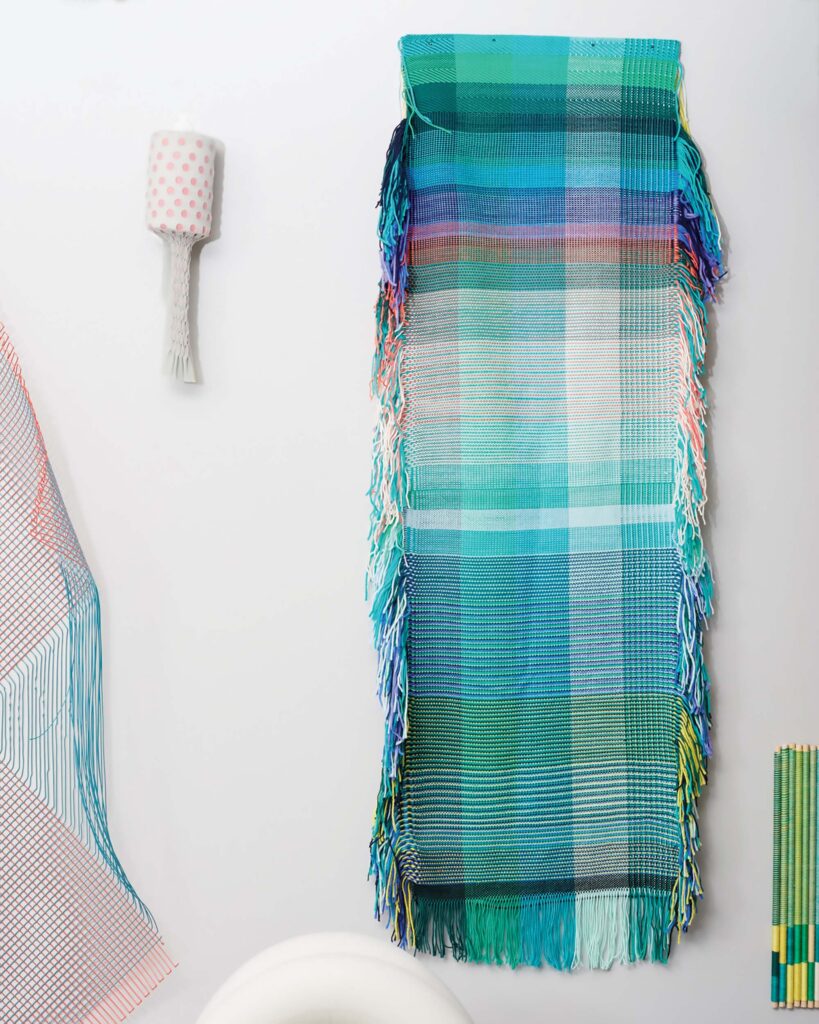
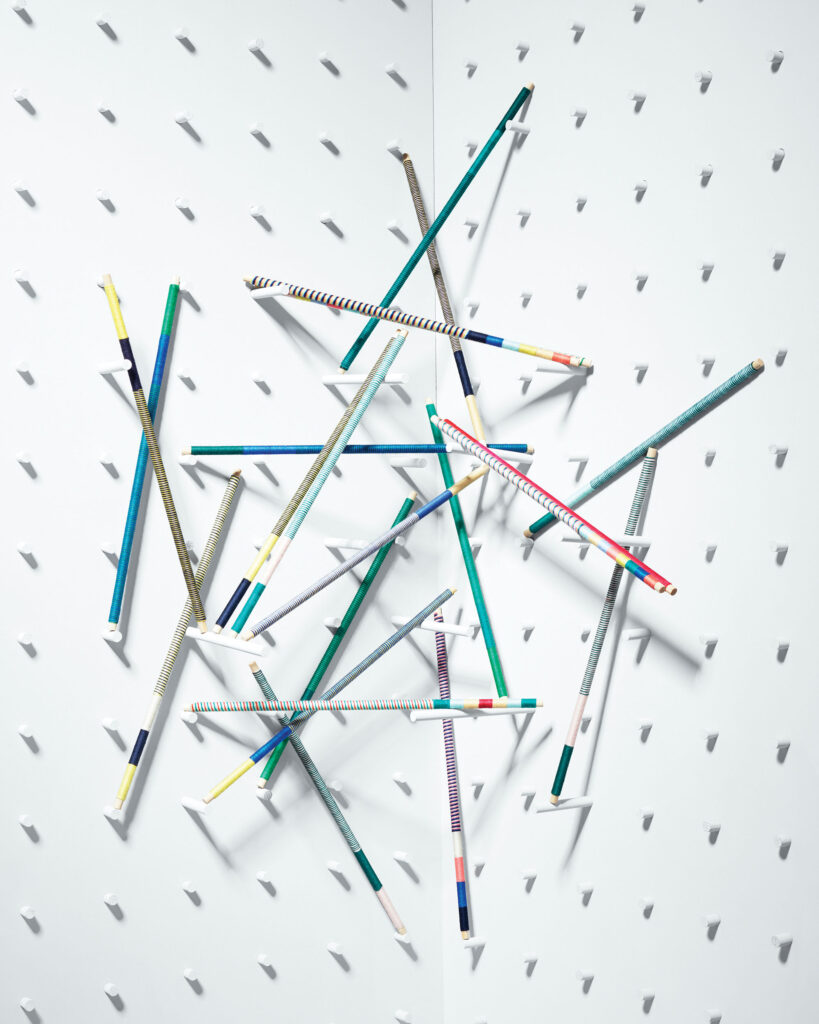
For people interested in learning about upcycling, what book, artist or designer would you recommend?
As I mentioned, Patagonia seems to me to be a good example in those terms. I haven’t read Let My People Go Surfing yet but I’m very interested in reading it now that my team is growing and I want a good atmosphere for everyone.
I also really admire Claudy Jongstra’s work and all that she is doing with natural dyes and her farm.
Born in the Netherlands, Simone Post is a textile and product designer based in Rotterdam. Her work delves into color, surface and print. She has a predilection for the process itself, and for discovering through experimentation the hidden potential of materials and techniques. He has collaborated with companies such as Adidas, Kvadrat and Vlisco. His focus is on the unexpected uses of materials, striving to preserve craftsmanship and promote sustainability.
